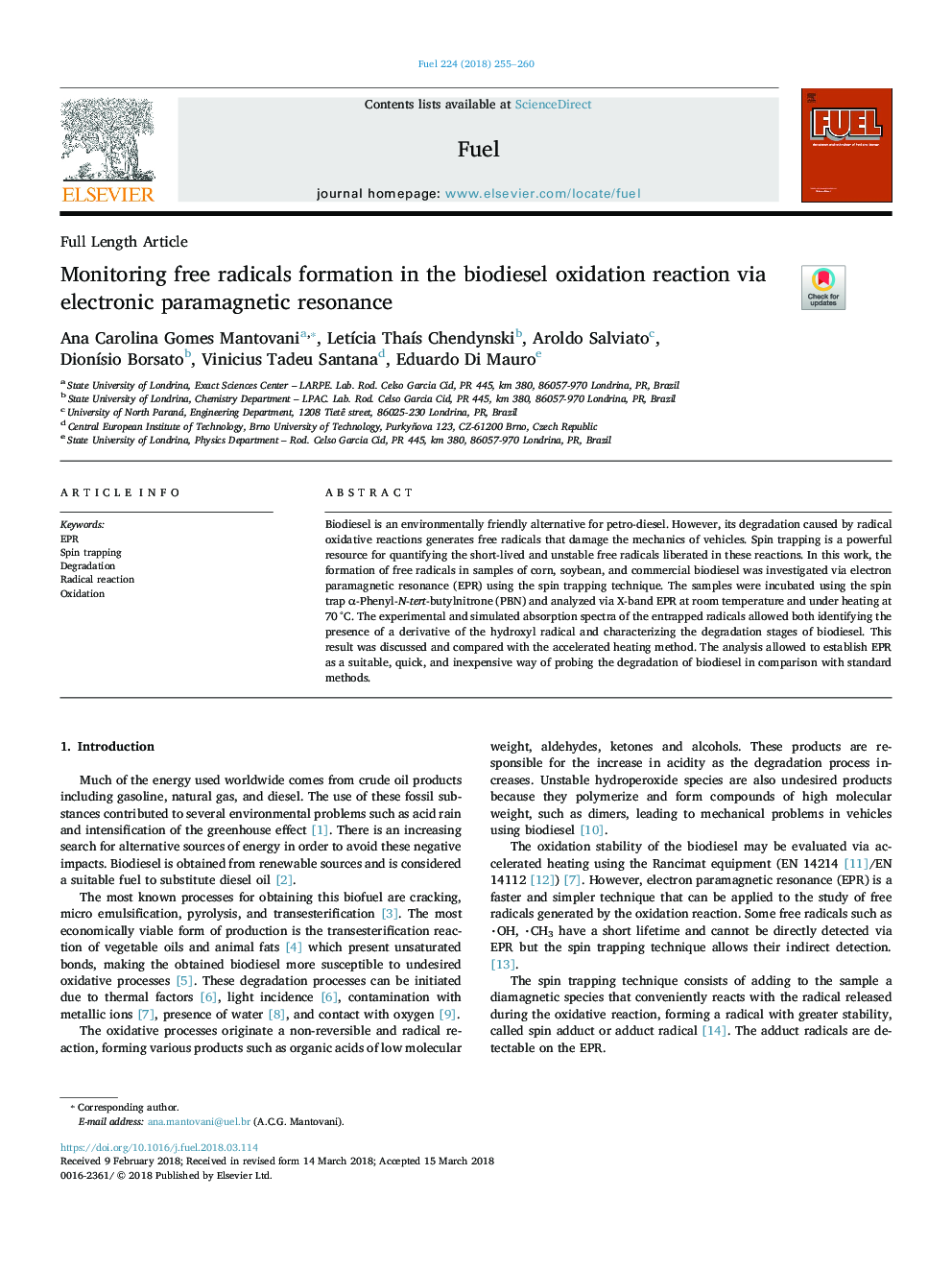| Article ID | Journal | Published Year | Pages | File Type |
|---|---|---|---|---|
| 6631138 | Fuel | 2018 | 6 Pages |
Abstract
Biodiesel is an environmentally friendly alternative for petro-diesel. However, its degradation caused by radical oxidative reactions generates free radicals that damage the mechanics of vehicles. Spin trapping is a powerful resource for quantifying the short-lived and unstable free radicals liberated in these reactions. In this work, the formation of free radicals in samples of corn, soybean, and commercial biodiesel was investigated via electron paramagnetic resonance (EPR) using the spin trapping technique. The samples were incubated using the spin trap α-Phenyl-N-tert-butylnitrone (PBN) and analyzed via X-band EPR at room temperature and under heating at 70â¯Â°C. The experimental and simulated absorption spectra of the entrapped radicals allowed both identifying the presence of a derivative of the hydroxyl radical and characterizing the degradation stages of biodiesel. This result was discussed and compared with the accelerated heating method. The analysis allowed to establish EPR as a suitable, quick, and inexpensive way of probing the degradation of biodiesel in comparison with standard methods.
Related Topics
Physical Sciences and Engineering
Chemical Engineering
Chemical Engineering (General)
Authors
Ana Carolina Gomes Mantovani, LetÃcia ThaÃs Chendynski, Aroldo Salviato, DionÃsio Borsato, Vinicius Tadeu Santana, Eduardo Di Mauro,
